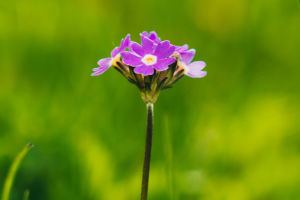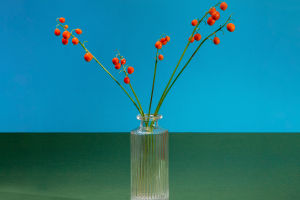Flower Parts in Reproduction
Flowers are more than just nature's beautiful ornaments; they are essential to the survival of plant species.
The intricate structures within flowers have evolved over time to ensure successful reproduction, with each part serving a specific function.
Understanding how these structures support plant reproduction can deepen our appreciation for the complexity and importance of flowers in the natural world.
The Anatomy of a Flower
To understand how flowers aid in plant reproduction, it helps to break down their main parts. Flowers typically consist of male and female reproductive organs, surrounded by accessory structures that aid in the process. The primary parts include:
Sepals: These are the outermost green structures that protect the flower bud before it opens. While not directly involved in reproduction, they serve as the first line of defense, shielding the delicate reproductive organs inside.
Petals: Petals are often brightly colored and fragrant, designed to attract pollinators like bees, butterflies, and birds. Their vivid appearance helps draw attention to the flower's reproductive organs, increasing the chances of pollination.
Stamens: These are the male reproductive organs, consisting of the filament and anther. The anther produces pollen, which contains the male gametes (sperm cells). The filament holds the anther in place, allowing it to release pollen into the environment.
Pistil: The pistil, the female part of a flower, consists of three key components: the stigma, style, and ovary. The sticky stigma catches pollen, while the style serves as a passage linking the stigma to the ovary. Inside the ovary, the ovules await fertilization, which, when successful, results in the formation of seeds. This intricate process is central to plant reproduction.
The Role of Pollination
Pollination is the process through which pollen is transferred from the anther (male) to the stigma (female). This can occur through various methods, including wind, water, or, most commonly, animals like insects and birds. When pollinators are attracted to the petals of a flower, they often brush against the anthers, collecting pollen on their bodies. As they move to another flower, they deposit this pollen onto the stigma, facilitating fertilization.
Different plants use various methods for pollination, such as wind, water, or the help of animals. Bees, for instance, play a crucial role in the pollination of numerous flowers. As they collect nectar, pollen sticks to their bodies and gets transferred between plants, aiding in fertilization. Many plants depend on these pollinators for reproduction, and without them, plant populations would face significant challenges.
Fertilization and Seed Formation
Once the pollen lands on the stigma, the process of fertilization begins. The pollen grain grows a tube down through the style, reaching the ovary, where it releases sperm cells. These sperm cells fertilize the ovules inside the ovary, which then develop into seeds.
The ovary itself transforms into a fruit after fertilization, protecting the seeds and often aiding in their dispersal. For example, in apples, the fleshy fruit helps spread seeds when animals eat it and then deposit the seeds elsewhere. In simpler plants, such as grasses, seeds are formed without the production of a fleshy fruit, but the underlying process remains the same.
The Importance of Flower Structures
Each part of a flower is designed to maximize the chances of successful pollination and fertilization. The sepals shield the flower bud as it grows, while the colorful petals draw in pollinators. Stamens are responsible for generating and dispersing pollen, and the pistil is where pollen is captured and fertilized, ultimately resulting in seed formation. Together, these structures work seamlessly to ensure the plant's reproduction.
Without these specialized structures, plants would struggle to reproduce and maintain their species. Flowers are critical in keeping ecosystems in balance, supporting food chains, and providing resources for other species. Furthermore, flowering plants (angiosperms) dominate most of the world's landscapes and are the basis of human agriculture. Many of the fruits, vegetables, and grains we consume daily originate from the successful reproduction of flowering plants.
Cross-Pollination vs. Self-Pollination
It’s important to note that not all plants rely on cross-pollination (the transfer of pollen from one plant to another). Some plants are capable of self-pollination, meaning the flower can fertilize itself. While this may seem advantageous, cross-pollination tends to produce stronger offspring due to genetic diversity. For this reason, many plants have evolved mechanisms to encourage cross-pollination, such as separate male and female flowers or timing differences in the maturation of their reproductive organs.
Human Impact on Pollination
While flowers have evolved to maximize their chances of reproduction, human activities are increasingly affecting pollination. Habitat destruction, pesticide use, and climate change are disrupting pollinator populations, particularly bees. This can have severe consequences for plant reproduction, as many plants rely on these creatures for pollination. Without proper intervention, both natural ecosystems and agricultural production could face significant challenges in the future.
Nature's Reproductive Powerhouses
Flower structures are a brilliant adaptation designed to facilitate plant reproduction. From attracting pollinators to enabling fertilization, each component plays a vital role in the continuation of plant species. Understanding these processes highlights how interconnected our ecosystems are and the importance of protecting both plants and their pollinators.


